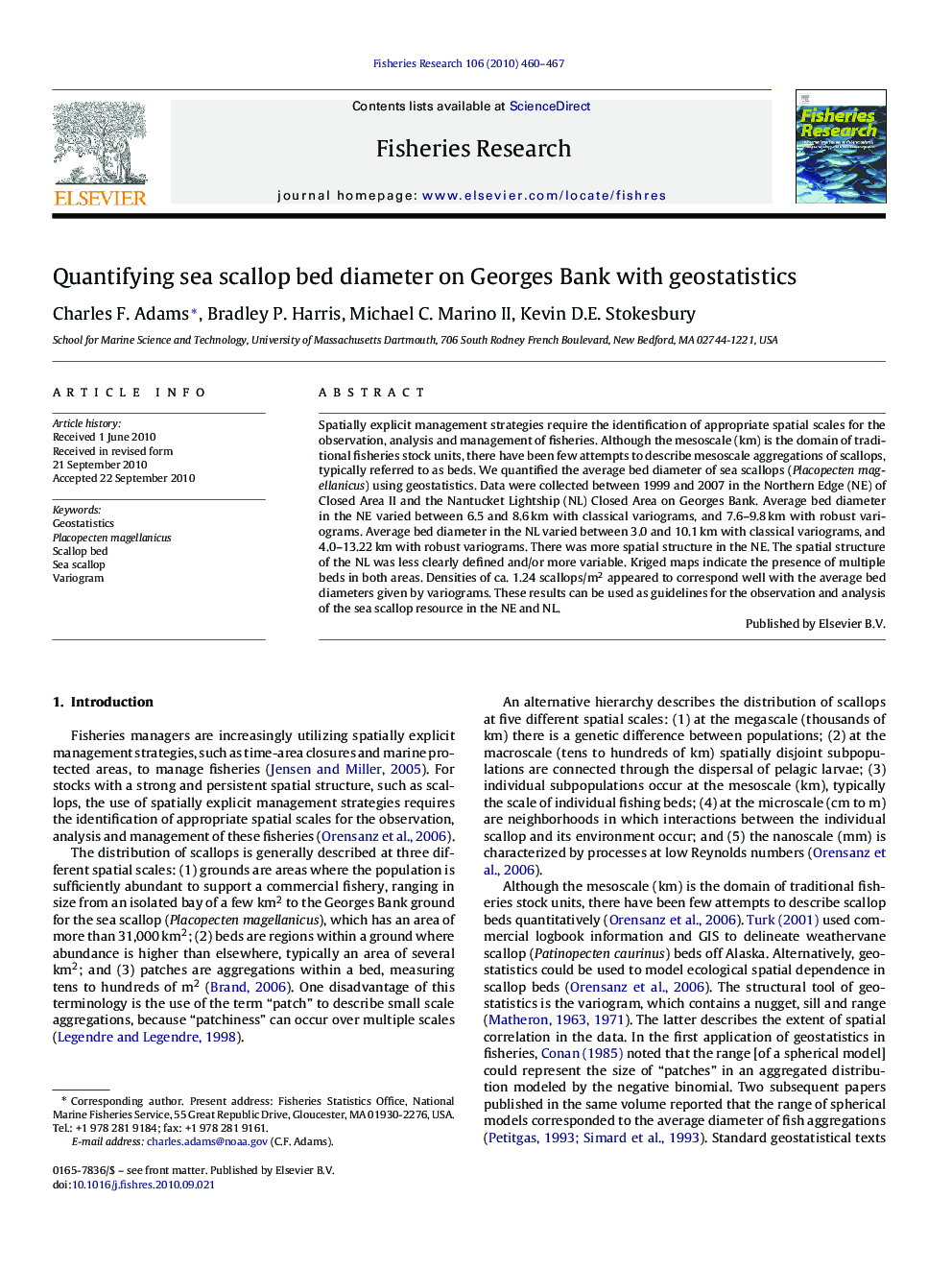| Article ID | Journal | Published Year | Pages | File Type |
|---|---|---|---|---|
| 4543967 | Fisheries Research | 2010 | 8 Pages |
Spatially explicit management strategies require the identification of appropriate spatial scales for the observation, analysis and management of fisheries. Although the mesoscale (km) is the domain of traditional fisheries stock units, there have been few attempts to describe mesoscale aggregations of scallops, typically referred to as beds. We quantified the average bed diameter of sea scallops (Placopecten magellanicus) using geostatistics. Data were collected between 1999 and 2007 in the Northern Edge (NE) of Closed Area II and the Nantucket Lightship (NL) Closed Area on Georges Bank. Average bed diameter in the NE varied between 6.5 and 8.6 km with classical variograms, and 7.6–9.8 km with robust variograms. Average bed diameter in the NL varied between 3.0 and 10.1 km with classical variograms, and 4.0–13.22 km with robust variograms. There was more spatial structure in the NE. The spatial structure of the NL was less clearly defined and/or more variable. Kriged maps indicate the presence of multiple beds in both areas. Densities of ca. 1.24 scallops/m2 appeared to correspond well with the average bed diameters given by variograms. These results can be used as guidelines for the observation and analysis of the sea scallop resource in the NE and NL.
